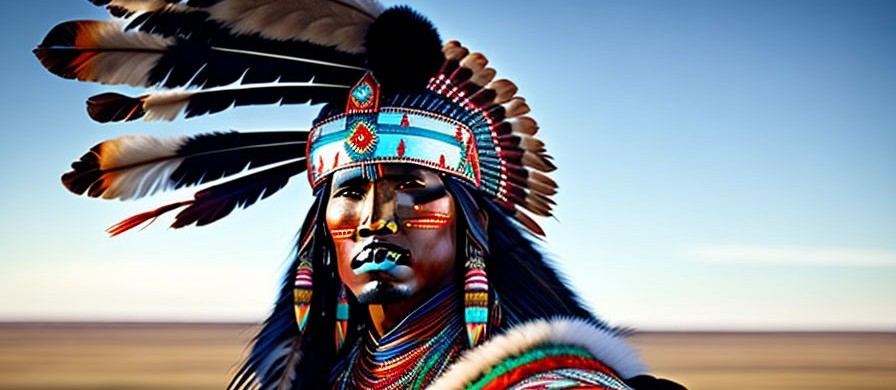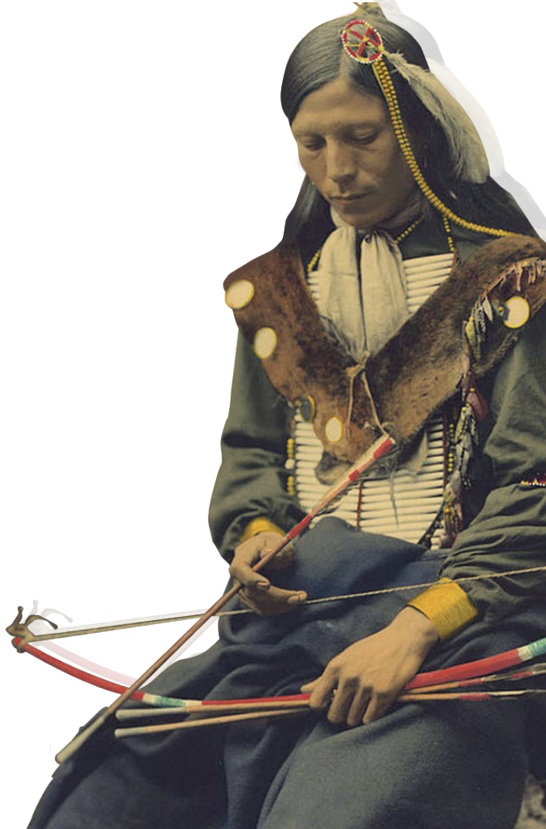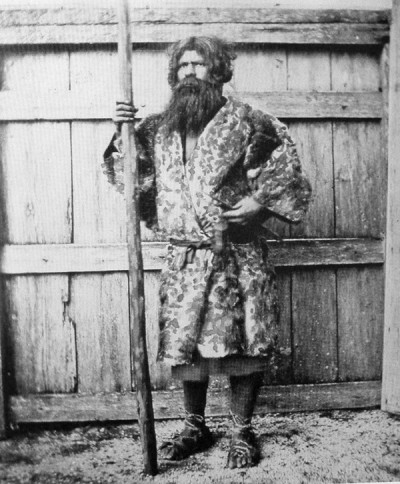
Think about the following questions.
1. What are some examples of clashes between science and traditional cultures?
2. What are the goals of science?
3. Who and what do you imagine when you think of "native" people?
VOCABULARY PREVIEW
Match each New Academic Word List(NAWL) word with the correct definition.
- indigenous _____
- descendant _____
- ancestor _____
- implicit _____
- classify _____
- anthropology _____
- a. a relative of a person or group of people who lived in the past
- b. native to a specific region
- c. to systematically arrange in groups
- d. indirectly communicated
- e. the scientific study of humans
- f. a distant dead relative in a direct line; forefather
REPATRIATION OF REMAINS

In 1971, Maria Pearson, a Yankton Dakota tribe member, waited in the Iowa governor's lobby in full traditional dress until he finally agreed to speak with her. He asked what he could do for her, and she told him, “You can give me back my people's bones, and you can quit digging them up.” She was referring to remains1 of Native Americans uncovered during a state highway construction project. The remains of white people, apparently early settlers, had been respectfully reburied. By contrast, the Native remains had been sent off to researchers with obvious, if implicit, disrespect. Pearson did not back down, and the meeting eventually led to NAGPRA, the Native American Graves Protection and Repatriation2 Act.
But the debate about repatriation of remains continues to divide scientists and indigenous peoples. Many indigenous groups strongly believe that they have the right to possess and protect the remains of their ancestors. On the other hand, researchers believe that the skeletons hold too much potential for scientific study to surrender them to indigenous groups. This division is seen in such places as the US, Canada, Australia, and New Zealand.
NAGPRA did not become law in the US until 1990. The main principles of NAGPRA are simple: burial sites are sacred3 and should not be disturbed, and remains that have been removed from graves should be returned to the person's descendants.
Museums and universities have returned thousands of remains to various indigenous groups for reburial. There are two main arguments in support of repatriation. One involves the need to make amends for past abuse; the second involves the ancestral line and rights to remains.
First, one must look at how most of these remains ended up in museums and universities. Most of these collections were gathered during times of colonization, under some of the most severely oppressive4 conditions indigenous groups have faced. Graves were looted5 for skeletons and grave goods, which were displayed in museums. Indigenous groups in favor of repatriation are finally able to reclaim the bones of people central to their identities, which were taken from them centuries ago.
Secondly, indigenous groups are laying claim to their ancestral lines. Many cultures feel there's a direct link between people from their culture today and their ancestors that goes back thousands of years. They also believe that the treatment of their ancestors directly affects their own lives now. Many Native American groups believe that everything is born from the earth and that it must return to the earth when it dies. If this circle is broken, then balance is destroyed, ultimately leading to disaster. Many thus feel that the hardships indigenous groups have long experienced are a result of the theft of their ancestors' remains.
On the other side of the repatriation debate is the scientific argument that these bones can be used to understand human history and diversity, human evolution, human migration, disease, health, and cultural practices. The Natural History Museum in London, for example, holds an extensive collection of about 19,500 items. Physicians have used this collection to develop new methods for knee replacements, and Japanese dentists have used it to study the impact of diet on dental6 disease. It has also been used as a training collection for forensic7 anthropology to help identify victims from mass graves8. If this collection had been repatriated before it could be studied, this work would not have been possible.
A second argument for the study of remains involves changes in anthropological techniques and the questions being asked. When the remains were first collected, they were used to classify people into races and, oftentimes, to try to prove the superiority of one race over another. Opponents of repatriation argue that anthropologists now use these collections to show the universality9 of human traits rather than promoting theories of racial superiority. Moreover, they argue, skeletal remains are a record of the past, and if these remains disappear, a large part of history is lost. However, both positions in the debate are based on serious arguments that should be taken into consideration on a case-by-case basis.
New Academic Word List
- remains 1 : n. what is left of a person's body after death
- repatriation 2 : n. the act of returning something or someone to the nation of origin
- sacred3 : adj. holy; deserving of religious respect
- oppressive 4 : adj. very cruel or unfair
- loot 5 : v. to rob, especially during war or unrest
- dental 6 : adj. of or relating to the teeth
- forensic 7 : adj. relating to the use of scientific methods in solving legal problems
- mass grave 8 : n. a grave containing multiple human bodies, often the victims of execution or natural disaster
- universality 9 : n. the quality of being characteristic of everyone
READING COMPREHENSION
A ‣ Mark each statement as true (T) or false (F) according to the reading.
- An important US law about repatriation was passed in 1971.
- True
- False
- Many scientists believe the need to study the skeletons outweighs other concerns.
- True
- False
- The remains were mostly taken from their original burial sites with permission.
- True
- False
- Some indigenous people believe the theft of remains has brought them misfortune.
- True
- False
- Scientists have used the remains to make medical discoveries.
- True
- False
B ‣ Choose the best answer according to the reading.
- What is the main idea of the reading?
- a. Science is less important than the desire to make the Earth whole again.
- b. Indigenous tribes should not value their religious beliefs over human progress.
- c. Scientists and indigenous people each have valid considerations regarding native remains.
- d. The conflict between native tribes and scientists is a misunderstanding that could be easily solved.
- What can be inferred about Maria Pearson?
- a. She was a personal friend of the governor's.
- b. She wrote the Native American Graves Protection and Repatriation Act.
- c. She was angry about the treatment of her ancestors' bones.
- d. She opposed all use of human bones in scientific research.
- The phrase make amends in paragraph 3 means _____.
- a. sue
- b. accuse
- c. forgive
- d. compensate
- What does the reading state about the field of anthropology?
- a. It used to involve racist theories but no longer does.
- b. It made no important discoveries until quite recently.
- c. It no longer needs skeletal collections as much as it once did.
- d. It shows that groups of people have fundamental differences.
C ‣ Find the correct numbers in the reading and write them on the lines.
- _____: the year Maria Pearson visited the governor of lowa
- _____ : the year NAGPRA was passed
- _____ : the approximate number of skeletal remains in the Natural History Museum in London
SUMMARY
Fill in the blanks with the phrases in the box.
- petitioning the governor
- ancestors' remains
- racial theories
- classified burial sites
- returned by institutions
- history and development
The debate over the rights of Native Americans to claim their 1 _____ has a long history. Maria Pearson of the Yankton Dakota tribe helped to highlight the issue in the 1970s, 2 _____ of lowa and campaigning for the return of remains. In 1990, NAGPRA became law. The act 3 _____ as sacred and stated that remains already in the possession of museums and universities should be returned. Thousands of remains have been 4 _____, but many scientists still argue that bones should be kept for study. They suggest that bones can help us understand human 5 _____ and even provide evidence to combat pseudoscientific 6 _____.The debate continues as the government tries to find a balance between the rights of individual communities and the need to continue anthropological research.
VOCABULARY PRACTICE
Fill in the blanks with the words in the box. Change the form if necessary.
- ancestor
- anthropology
- classify
- descendant
- implicit
- indigenous
- Today, there are millions of direct _____ of Genghis Khan living throughout Asia and elsewhere.
- The Harvard Test of _____ Bias uses indirect methods to test for prejudices people are not aware they have.
- The platypus is _____ as a mammal in spite of the fact that it lays eggs.
- New discoveries in _____ suggest that there was more than one route of migration out of Africa.
- Julia, a French Canadian, is traveling to France to become acquainted with the country of her _____ .
- Alligators are only _____ to two countries: the US and China.
SUPPLEMENTAL READING
Kennewick Man

In 1996, a skeleton was found on the banks of the Columbia River in Kennewick, Washington. The US Army Corps of Engineers owned the land and was therefore responsible for the remains. A forensic anthropologist determined the bones were indeed old and had dental characteristics consistent with those of pre-contact Native Americans. But Kennewick Man's bones had European characteristics, leading some to theorize that he may have been an early settler from Europe.
Radiocarbon dating revealed a surprise: the remains were approximately 9,500 years old, meaning they pre-date any known European migration. According to NAGPRA, any remains that are dated to before 1492 (pre-contact) are considered Native American and are therefore repatriated. The US Army Corps contacted local First Nations groups to give them the opportunity to make a claim for repatriation. The bones were claimed by the Confederated Tribes of the Umatilla Indian Reservation.
In 1996, the US Army Corps announced its intention to repatriate the remains. But a group of scientists led by the anthropologist Douglas Owsley filed a lawsuit to stop repatriation, charging that the remains were not Native American at all.
After years of legal battles, the scientists reached an agreement with the Native American groups. Using new methods of obtaining DNA from ancient remains, they compared Kennewick Man's genes with those of various ethnic groups. Finally, in 2015, they concluded that Kennewick Man was, indeed, a Native American, despite his European-looking skull.
The discovery pleased Native Americans, as did the way the scientists showed respect for their traditional beliefs. Tribal representatives were allowed to enter the lab and perform a ceremony in Kennewick Man's honor. In 2017, 200 members of five tribes gathered to bury the remains.
Fill in the blanks with information from the reading.
- The characteristics of the bones led some experts to _____ that the body was that of a European settler.
- Scientific study revealed Kennewick Man was _____ .
- Representatives of Native American tribes _____ to bury the remains.

Leave a comment
Load more